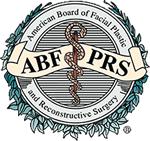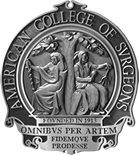Mohs reconstructive surgery can help treat a Mohs defect with little to no visible scarring. Mohs surgery is an effective skin cancer treatment that has been used for decades to treat basal cell skin cancer (BCCA) and squamous cell skin cancer (SCCA), two of the most common skin cancers. The majority of skin cancers occur on the face, scalp, or neck, which are highly sensitive areas of the body. The Mohs procedure is delicate enough to remove as little healthy skin as possible, while still effectively targeting and removing cancerous cells. After your Mohs procedure, any cosmetic irregularity at the incision site is often referred to as a Mohs defect. Mohs reconstructive surgery can help treat a skin cancer lesion with little downtime and little to no visible scarring.
How do I know if Mohs reconstructive surgery / skin cancer reconstruction is right for me?
Mohs surgery may be right for you if you are looking to effectively treat a Mohs lesion after receiving Mohs surgery for basal cell skin cancer or squamous cell skin cancer. Mohs surgery is a delicate yet effective skin cancer treatment that can remove all cancerous cells while preserving as much healthy facial tissue as possible. Despite leaving as much healthy tissue as possible, Mohs surgery may leave a visible Mohs defect that requires Mohs reconstructive surgery.
Mohs Procedure:
Basal cell skin cancer, squamous cell skin cancer, and other skin cancers respond well to skin cancer treatments such as Mohs surgery when caught early. Typically, skin cancers are treated by a Mohs dermatologic surgeon to ensure complete removal of the cancerous cells. Because Dr. Zimbler works alongside leading dermatologists and dermatologic surgeons in NYC, he can refer you to a top skin cancer doctor for Mohs surgery. After your Mohs procedure with a referred dermatologist, Dr. Zimbler can address lesions or defects that require careful Mohs reconstructive surgery to reduce any irregularities and to help you achieve a natural aesthetic result.
Basal cell skin cancer: Affects basal cells, which are the cells in the lower part of your epidermis. These cells eventually mature into squamous cells naturally. Basal cell skin cancer is the most common skin cancer and often grows slowly. Fortunately, it is rare that this form of skin cancer spreads to other parts of the body.
Squamous cell skin cancer: Affects the squamous cells, which are the flat cells on the outermost layer of your skin. Squamous cell skin cancer can develop on scars or skin sores.
Following removal of skin cancer by your dermatologist, Dr. Zimbler can perform skin cancer reconstruction surgery for an aesthetically pleasing result.
Mohs reconstructive / skin cancer reconstruction surgery: Local anesthesia will be applied around the area of the Mohs defect during skin cancer reconstruction. Using local anesthesia provides a quicker recovery period with less downtime. The type of Mohs skin cancer reconstruction Dr. Zimbler will perform depends on your individual case and Mohs skin cancer lesion. Some reconstruction techniques include skin grafts, flaps, linear sutures, and purse-string sutures.
Skin grafts are used in skin cancer reconstruction when the Mohs defect is too large to be closed with a linear suture or flap. Dr. Zimbler will harvest healthy skin from an area of the body that may have loose or excess skin. A common skin graft donor site is behind the ears or, for larger Mohs lesions, the thighs or buttocks. This skin graft is then placed over the Mohs defect and carefully sutured. During your recovery period, the skin graft will heal and form its own blood supply, which will allow the skin graft to function as your normal facial skin.
A skin flap uses excess local tissue and “flaps” it over to cover the cosmetic irregularity. This skin is lifted and placed over the area where your skin cancer was removed and then carefully sutured. Flaps are often used when treating a Mohs defect that is close to sensitive areas of your face, such as your mouth, eyes, and nose. Skin flaps are effective because they do not disturb or negatively impact the structures of your face. Leaving little to no scarring, skin flaps often leave many small, fragmented incision lines, which are hardly noticeable, especially when compared to one continuous scar.
A linear suture is a treatment that sutures the sides of the defect together. This method is often used when the lesion runs along a natural facial line, fold, or winkle. Many Mohs irregularities can be treated with the linear suture technique. After your recovery period, little to no visible scarring is left. A purse-string technique is an adapted linear suture where the sutures are underneath the edge of the wound. By placing the sutures underneath the skin along the perimeter of the wound, Dr. Zimbler can bring the wound together and close it.
| Mohs Reconstruction Techniques | |
| Skin Grafts | Use skin that is harvested from an inconspicuous part of the body, such as behind the ear in minor cases. Placed over the Mohs defect and sutured. |
| Flaps | Use the surrounding tissue next to a Mohs lesion. Tissue is lifted and placed over defect and then sutured. Often used when treating lesions that are relatively close to major facial features such as the eyes, mouth, or nose. |
| Linear Sutures | A simple straight line suture that brings the two sides of the wound together to close. This technique is often used when a Mohs defect occurs along a natural facial line or fold. |
| Purse-String Sutures | An adapted linear suture where the sutures are placed underneath the perimeter of the wound. The wound is then closed to properly heal. |
Mohs reconstructive surgery / skin cancer reconstruction recovery time:
After your Mohs reconstructive surgery is complete, your dermatologist will bandage the treatment site and send you to our office. In most cases, this will be done the same day as your Mohs procedure. Once the defect is assessed, Dr. Zimbler will tailor your Mohs reconstruction to obtain the best results with minimal scarring. Most Mohs reconstructive surgeries can be done with either local anesthesia or a twilight-monitored anesthetic. The majority of Mohs irregularities can be repaired with either skin flaps or skin grafts. Sutures from the procedure are typically removed in less than 1 week. Most procedures require single stage reconstruction and provide excellent results. During the early healing process, we encourage our patients to apply specifically chosen camouflage makeup, scar creams, scar patches, and sun block to avoid irritation. In some instances, further refinement of the scar can be obtained. Lasers, or minor scar revision surgery can further camouflage any irregularities. These procedures can be done in the months following your initial Mohs reconstruction procedure.


















